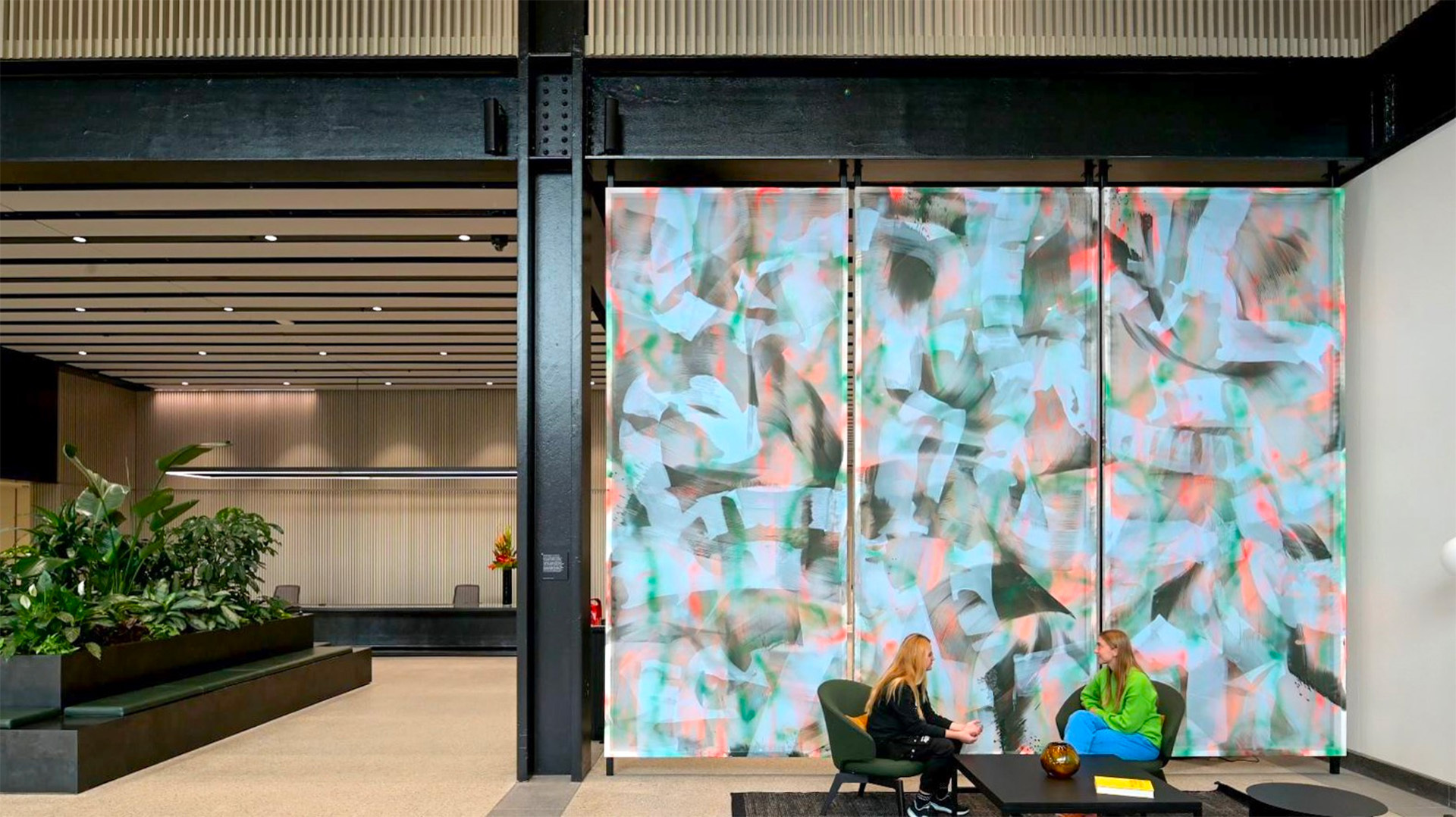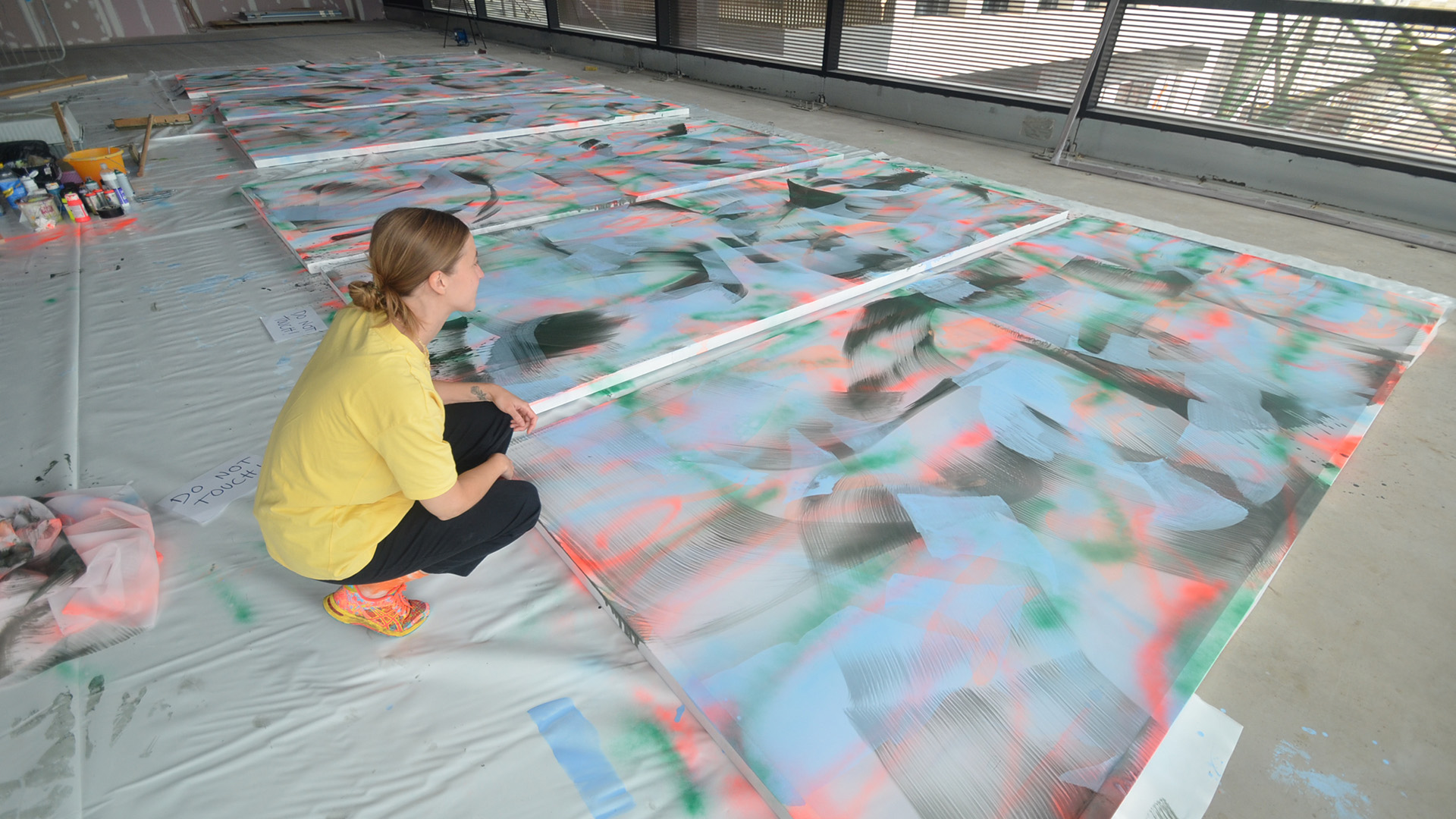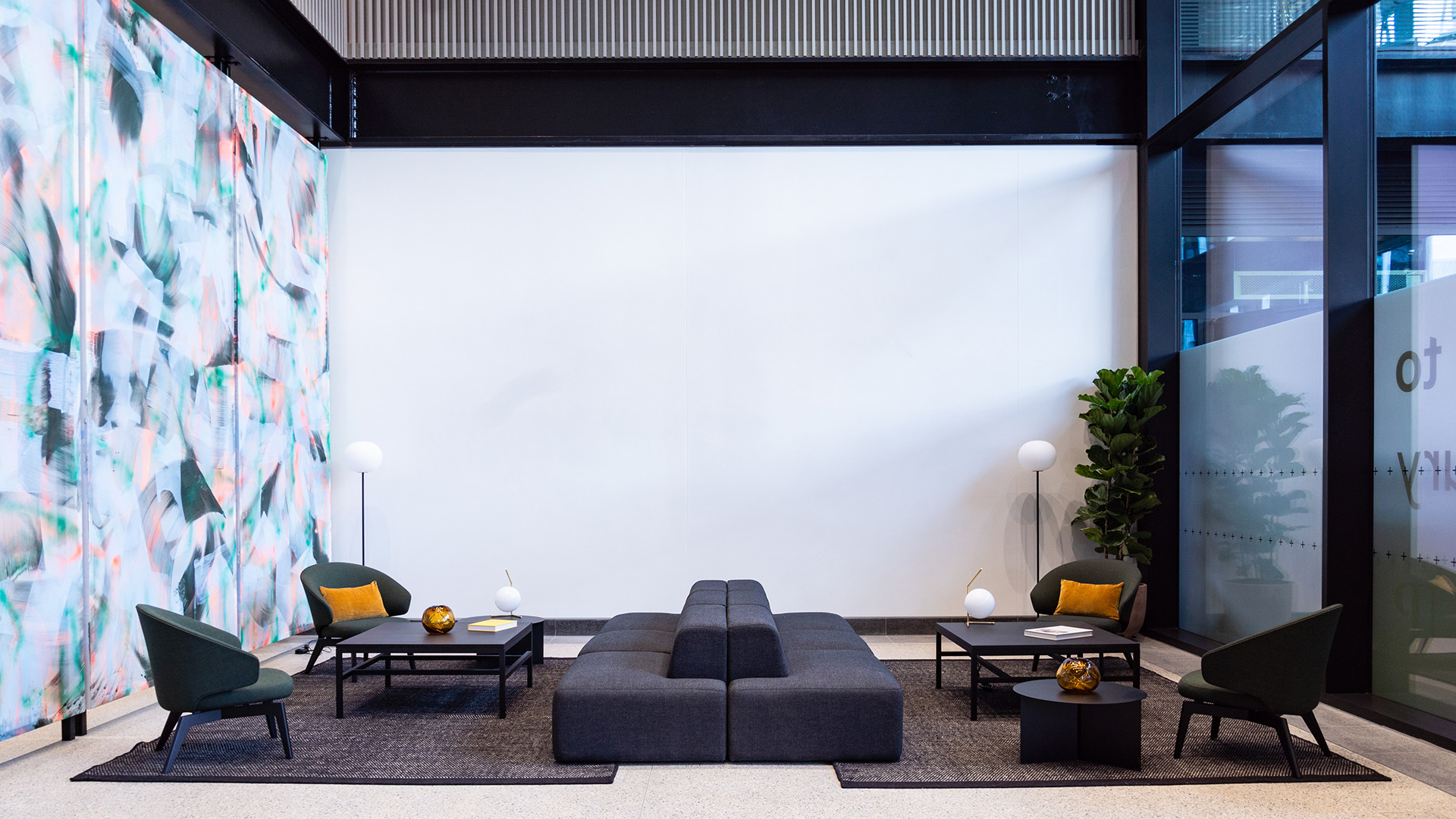A source of energy for all

A brand new, original piece of artwork has been installed in the reception area of the latest building at Paradise Birmingham, One Centenary Way.
Created by artist Betsy Bradley, the piece offers a unique experience that can be encountered from different sides of the reception space.
Betsy’s work has a broad range of influences, from Arte Povera to Mono-ha. As well as these art movements, she has also worked on a large scale and painted with objects such as brooms much earlier on in her practice, and she was drawn to revisit this following a long residency in Japan where she first encountered giant calligraphy brushes.
This influence has returned in her more recent work, in which she now creates her own giant mark making tools. These have been used in this piece, meaning her whole body is incorporated into the physical and dynamic gestures.

“The very way materials act – some vibrant, some potent – makes painting not a matter of mastery and domination, but a way for chance and instinct to play their part, where the properties of the materials themselves are allowed full expression,” says renowned art critic Hettie Judah, reflecting on Betsy’s work.
Further residences in Scotland and Ireland allowed Betsy to explore this way of working further, while also being inspired by the wide-open spaces of these rural locations.
Spending time amid nature is an important element of Betsy’s process, particularly being near the sea and cold water swimming, absorbing these experiences and transmitting them into the rawness of her work.
One Centenary Way is a memorable building, but is still an immovable object designed to do a very specific job in a very specific location.
A place where people work is seldom open to interpretation.
Deliberately inviting artwork, particularly of such scale, into the space brings a harmonious contrast of openness and fluidity to an otherwise ordered, everyday workspace. It is an opportunity to be uplifted and taken outside of ordinary thought. A source of invigoration.
The final days of creating the artwork were extremely intense due to the very physical style of painting Betsy deploys, which uses large tools like brooms and sponges.
Her painting process takes the form of outbursts of highly energetic activity; she was careful to preserve her energy in the days leading up to painting so more could be released into the work.
Betsy reported that she was also conscious of being present in a very busy part of the city with cars, buses and trams constantly passing by.
This feeling of insignificance, of being a single human being within a large city, she said helped in the process of letting go of self-consciousness, bringing more freedom and authenticity to the work.
The magical play of translucent material and monumental scale of this work make it a unique statement within Paradise and One Centenary Way.
It reflects the infinite transience and motion of a big city through its dynamic gestures suspended in space, which are further animated by people moving past as they go to and from their offices.
Betsy hopes people will be excited and intrigued when they first see the artwork, while also finding it a source of energy and lightness; a playful intervention in the space that reveals more to them as time goes by.
‘DAKINI OCEAN’ by Betsy Bradley is now permanently installed in the reception area of One Centenary Way at Paradise Birmingham.
In Betsy’s own words:
Dakini Ocean is intended to be an exciting, engaging and playful intervention for the reception space of One Centenary Way.
“When first invited to take on the commission, a translucent partition immediately came to my mind. I hoped this could be an opportunity to expand on a work I made in my first major solo exhibition at Ikon gallery in 2022- a semi-translucent painted wall.
I was excited by the interactive potential this format of working had and wished ever since to be given the chance to take it further, and here it was.
I am interested in how my work might interact with architectural spaces, becoming a part of them in the most authentic way, as well as playfully exploring their functional possibility. So, the fact that One Centenary Way was looking for something to serve as both a partition and artwork was a perfect invitation.
Taking the form of 3 panels, each just over 4 metres tall by nearly 2 metres wide, the piece acts as a very large screen to divide the reception area from where people enter barriers to go into the main building.
I think of this work as a space in itself, rather than a fixed entity. The translucency of the voile fabric means the painted gestures are suspended as if weightless, floating in the air.
The double layer of panels placed back to back also invites play between the shadows of marks and colours from either side. The entire piece dances, shifting as you move yourself around it.
I want it to embody the transience and invisible forces like energy that are ever present in our world – particularly in the constantly evolving city centre of Birmingham.
One Centenary Way in itself is a striking building, embracing the rawness of materials, specifically its steel structure both outside and in. I wanted to connect with this by involving some strong dark colour in the work, which would chime with the boldness of the steel beams, and then to bring an exciting, surprising contrast of bright and warm colours alongside this.
My main intention for this work is for it to be a source of energy for everyone who encounters it. It is all too easy to get bogged down in the routine and ordinariness of everyday working life in a city, but I hope Dakini Ocean will invite people to leap out of this for a moment and be uplifted by its freeing gestures.
As a practising Kadampa Buddhist, I have a strong interest in impermanence, and the expansive potential of the mind. Dakinis are known as enlightened female beings, swift and joyful, and whose energy can be used in whatever way is necessary to benefit others.
It is this joyful energy that I wanted to bring into the work. My process of painting is a dance between myself and the paint – one that I can never predict – and allow myself to be completely within the movement of my body and the tools which are like an extension of it.
It is this complete surrendering to intuition and spontaneity that enables the most exciting outcomes. So, if people ask, ‘how did you plan the painting?’, my answer will be, ‘I didn’t’!
The idea is for the work to always be experienced as new, as it plays with the changing light and moving bodies passing by.
I see it as a living part of the building, brought to life by both natural elements, and the people who travel through it.”
